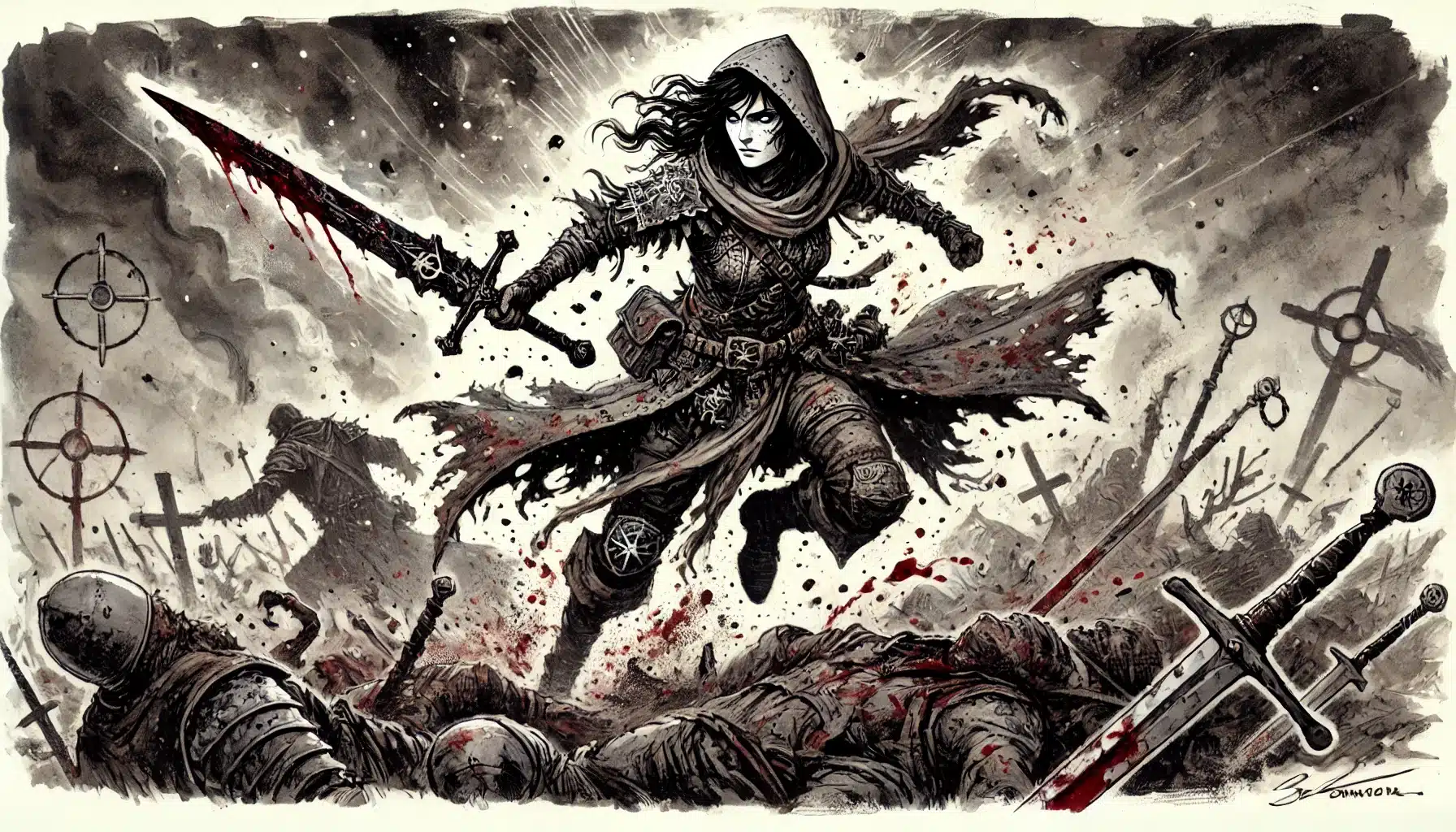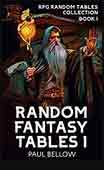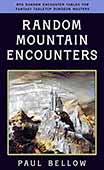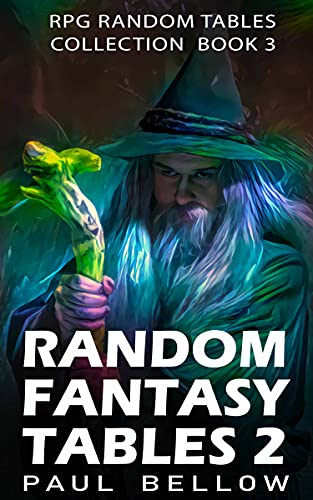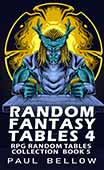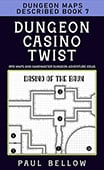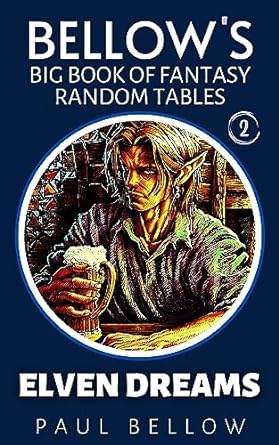The Dungeons & Dragons community is no stranger to controversy, but the latest revision of the Hexblade—a Warlock subclass beloved for nearly a decade—has ignited a storm of criticism rarely seen since the last time Wizards of the Coast dared to “fix” something fans didn’t think was broken. On May 6th, 2024, Wizards released a substantial playtest update that stripped away the Hexblade’s martial edge and rebuilt the subclass entirely around the Hex spell. The result is a character that’s nearly unrecognizable, both mechanically and thematically, from the Hexblade millions of players have used to devastate battlefields in 5th Edition.
For years, Hexblade was more than just a subclass. It was a power-gaming staple, a multiclass dip par excellence, and a versatile favorite among min-maxers and storytellers alike. Its unique blend of martial prowess, magical flair, and front-loaded power made it the secret weapon of countless optimized builds. Whether you wanted to smash skulls with a greatsword powered by your Charisma, or just cover some of Warlock’s most notorious early-level weaknesses, the Hexblade’s flexible kit had you covered.
But in the latest Unearthed Arcana, everything has changed. Now, the subclass pivots on the Hex spell, trading away its iconic martial features and much of its old synergy—especially with martial classes—for a more controlled, sustained-debuff playstyle. Gone are the days of slapping on medium armor and swinging a polearm with the confidence of a mini-paladin. In their place, players find a spell list curated for utility, and a summoned spectral blade that acts as an extension of the infamous Hex.
This article will break down the mechanical changes introduced in the 2024 playtest Hexblade, dive into the community’s reactions, and explore what the loss of the old Hexblade’s martial identity means for both power players and Warlock fans at large.
- What Made the Original Hexblade So Popular?
- The Big Changes in the 2024 Hexblade
- The New Core: Hexblade Manifest and Hex Effects
- Scaling Features: Life Stalker, Armor of Hexes, and Masterful Hex
- What the New Hexblade Loses
- Is the New Hexblade Too Reliant on Hex?
- Fan Reactions to the Playtest Version
- Can the New Hexblade Be Fixed—or Is It a Different Subclass Entirely?
- Final Thoughts on the New Hexblade Warlock
What Made the Original Hexblade So Popular?
Step back to 2014, and you’ll find the Hexblade sitting atop a pile of character sheets as the “secret sauce” of Warlock innovation. Its power wasn’t just in the numbers, but in access—early and advantageous—before most subclasses ever came into play. At level one, a Hexblade had armor and weapon proficiencies any squishy caster could envy, alongside the unparalleled ability to swing a sword using Charisma instead of Strength or Dexterity. For creative build-crafters, this was the green light for something special.
The Hexblade’s toolkit was synergistic to a fault: martial weapon proficiency, medium armor, and shield access let Warlocks wade into melee rather than skulking at the back alongside Wizards and Sorcerers. Suddenly, multiclassing Warlocks had far more meaningful choices. “Hexadin” builds (Paladin/Hexblade), Sorcelocks (Sorcerer/Hexblade), and Bardblades (Bard/Hexblade) became household names in the world of character optimization.
Try my AI Tabletop RPG generators...and an extensive library of content!
And the real star of the show? Front-loaded, all-in-one power, right from the start. A single level of Hexblade unlocked Charisma-based attacks and a grab bag of cool features, with little reason to stick around for more unless you wanted to go deep. Mechanically dense but elegantly simple, the original Hexblade made building your dream “arcane swordsman” easier—and more fun—than ever before.
Features and Qualities That Made the Original Hexblade Effective:
- Hexblade’s Curse for bonus damage, crit expansion, and self-heal on kill
- Medium armor proficiency for tankier Warlocks
- Shield proficiency enabling AC stacking and synergy with defensive spells
- Martial weapon proficiency—use any melee weapon with impunity
- Hex Warrior to use Charisma for weapon attacks & damage (no more reliance on Strength/Dex)
- Pact of the Blade synergy for superior weapon summoning
- Front-loaded subclass features at level 1
- Eldritch Smite (via Blade Pact) for Paladin-like nova damage
- Booming Blade/Green-Flame Blade cantrips optimized with melee fighting
- Incredible multiclass potential—one-level dips unlock versatility in Paladin, Sorcerer, Bard, even Fighter
- War Magic and Armor Invocations with less dependence on high Constitution
- Thematic resonance as a shadowy weapon-binder—a flavor hit as well as a power-play
- Curse Bringer as a capstone nova finisher
For many players, the Hexblade’s allure wasn’t just in raw damage. Its simplicity, flexibility, and martial flavor opened the doors for roleplaying the kind of sword-swinging spellcaster that D&D often promises but rarely delivers. The subclass was more than a pile of damage numbers; it was an enabler for fantasy fulfillment, a bridge between casting and combat that empowered players of all styles.
And so, the Hexblade became the anchor for half of 5e’s “gish” builds—a home for anyone who wanted to be the blade-wielding, curse-slinging antihero at their table. That blend of power, elegance, and identity proved all but irresistible.
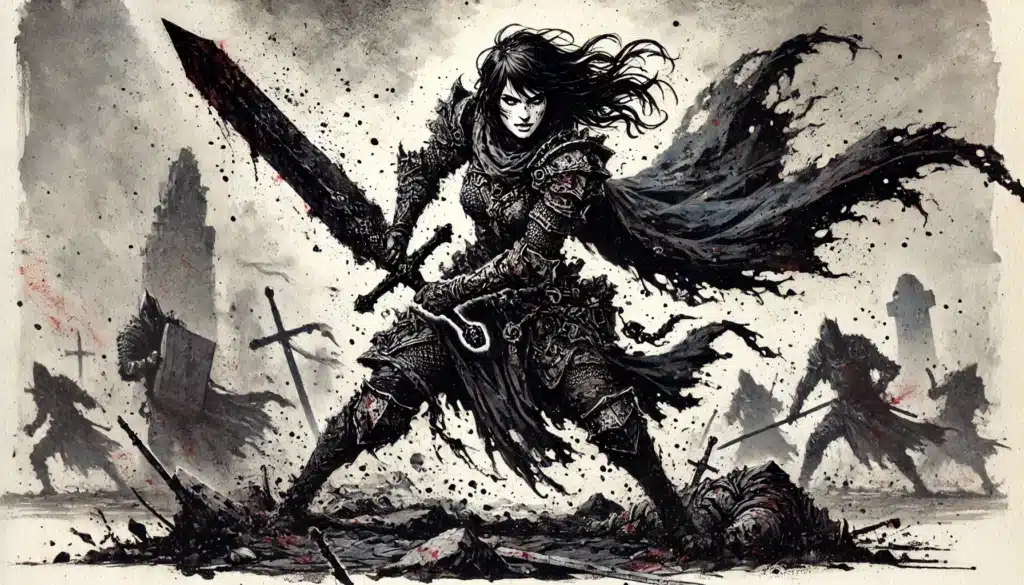
The Big Changes in the 2024 Hexblade
Wizards’ new take on the Hexblade is a complete structural teardown. The most immediate shock? Subclass entry doesn’t begin until level 3, putting it on par with other Warlock subclasses, but instantly shattering its reputation as the go-to multiclass dip. No more jumping into Hexblade at level one for a quick package of out-of-class proficiencies and Charisma weapon attacks; the door is now firmly closed to day-one optimization antics.
⚔️ Fantasy RPG Random Tables Books
Make life as a Gamemaster easier…
If you play Dungeons & Dragons, Pathfinder, or other fantasy RPGs, this
RPG random tables series
is packed with encounters, NPCs, treasure, and more. Available in eBook or print—either way, you’ll have a wealth of adventure ideas at your fingertips.
The spell list overhaul is equally dramatic. “Hexblade Spells” replaces the old expanded spells, but many player favorites are gone: no more Blur, Branding Smite, Blink, or even classic Paladin-adjacent offensive spells. Instead, the list leans on Hex as its defining signature, alongside a smattering of utility and control options. If the original Hexblade was a battlemage, the new one is a debuffer in wizard’s clothing.
Several iconic spells once linked to the Hexblade’s martial aggression—like Staggering Smite, Banishing Smite, and even Blink—have been swapped out for spells with more muted tactical profiles, often borrowed from the Ranger. What you get now is a suite that supports mobility, utility, or battlefield control, but rarely direct martial engagement.
Not only does this transform combat playstyle from “jump in and strike hard” to “hex and hinder, then reposition,” it also removes a sense of magical bombast that made the subclass so memorable. The Hexblade’s mechanical heart has been replaced, and the pulse now beats steadily—if a little less passionately—to Hex’s rhythm.
| Removed Spells | New Replacements | Effect on Playstyle |
|---|---|---|
| Blur | Hunter’s Mark | Focus shifts from defense/evasion to tracking/debuff |
| Branding Smite | Silence | Martial nova replaced by utility control |
| Staggering Smite | Misty Step | Aggressive melee utility swapped for repositioning |
| Banishing Smite | Pass without Trace | Enemy removal exchanged for stealth/bypass tactics |
| Blink | Locate Object/Person | Defensive unpredictability replaced with tracking |
| Elemental Weapon | Speak with Dead | Damage boost gone; minor investigative magic re-added |
| Wrathful Smite | Dispel Magic | Fear/nova replaced by dispelling |
| Cone of Cold | Commune with Nature | AoE removed for exploration-focused magic |
These spell list changes do more than alter numbers—they fundamentally recast the Hexblade from a hard-hitting smite artist to a warlock whose strengths lie in sustained curses and control. The old sense of “aggressive magic in melee” is traded for a more cerebral, depleting game of attrition.
This revised spellcasting identity means the subclass no longer feels like a martial frontliner. Instead, players find themselves asked to maintain Hex, reposition with subtle magic, and focus on longer-haul advantage rather than explosive spikes of damage.
The New Core: Hexblade Manifest and Hex Effects
The anchoring feature of the 2024 Hexblade arrives at level 3: Hexblade Manifest. Gone is the direct martial focus—in its place is a fusion of sustained spellcasting and spectral weapon channeling. The ability’s backbone is simple: you can cast Hex for free a number of times per day equal to your Charisma modifier, and while Hex is active, you conjure a floating Hexblade—an ethereal weapon that serves as your focus and deals extra debuff-laden punishment when you attack.
This spectral blade is more than thematic eye candy. For the first time, the subclass delivers a new set of “rider effects” on every attack you make against the target of your Hex spell. Thematic? Yes. Strategic? Certainly—though in practice, it shifts the dominant play loop from “smash and curse” to “curse, then harry and enfeeble.”
These rider effects come in three distinct flavors, each offering a different debuff when you hit a creature cursed by your Hex. Unlike the original Hexblade’s straight-up damage bonuses, these effects focus on imposing disadvantages, draining resources, or disrupting enemy plans—leaning ever further from martial slashing and ever closer to arcane manipulation.
The Three Hexblade Rider Effects:
- Draining Slash: When you hit the target of your Hex, they must succeed on a Constitution save or suffer disadvantage on attack rolls until the start of your next turn. Ideal for suppressing boss monsters or elite threats, especially in big single-target fights.
- Harrowing Blade: On a failed Wisdom save, the target is frightened until their next turn—perfect for controlling aggressive brutes or scattering weaker foes, especially when you want to disrupt enemy formation.
- Stymying Mark: The struck foe makes a Dexterity save or is unable to take reactions until the start of your next turn. This works tactically to lock down opportunity attacks and empower your team’s movement and spellcasting.
⚔️ Fantasy RPG Random Tables Books
Make life as a Gamemaster easier…
If you play Dungeons & Dragons, Pathfinder, or other fantasy RPGs, this
RPG random tables series
is packed with encounters, NPCs, treasure, and more. Available in eBook or print—either way, you’ll have a wealth of adventure ideas at your fingertips.
In practice, these three options mean that every Hexblade attack against their Hex target is as much about control as it is about dealing damage. Warlocks are encouraged to play the field, shifting rider effects to disrupt, hound, or cage their victims in the middle of the melee storm.
Put simply, this is a massive shift. The new Hexblade plays less like a swordmage and more like a hexing tactician—still cool, but a distinctly different flavor.
These new tools make combat less about big, blade-based burst rounds and much more about ongoing magical suppression. Instead of leading the charge, the Hexblade stands back, channeling spectral energy and manipulating the battlefield—sometimes to devastating effect, but rarely with the direct martial impact that was once its claim to fame.
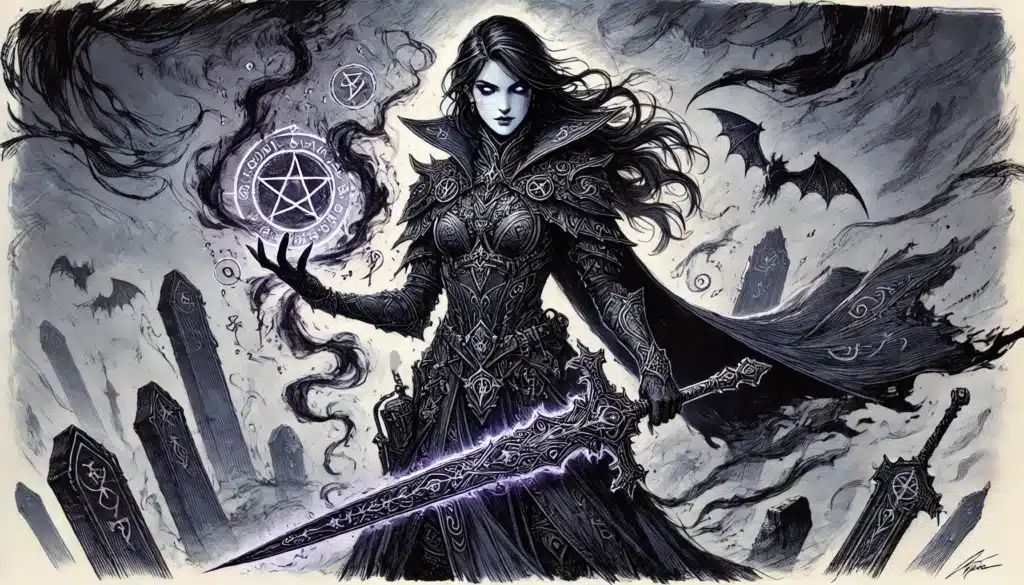
Scaling Features: Life Stalker, Armor of Hexes, and Masterful Hex
As the subclass climbs in power, the theme of “hex and pressure” only intensifies. At higher levels, the Hexblade gets access to new tools that further reinforce this style, drawing the class ever further from its martial roots.
Life Stalker, arriving at level 6, lets you regain hit points when you hit the target of your Hex, and adds your Charisma modifier to damage when you miss. This feature is a nod to sustainability—but it operates firmly within the bounds of spell-driven, not blade-driven, gameplay. No need to land every swing; your curse will drain your foes, even on a miss.
Armor of Hexes—now a level 10 feature—functions as a reaction, letting you impose disadvantage on attacks against you or an ally within range, as long as the attacker is cursed by your Hex. It’s a neat defensive trick, subtly thematic, but again hinges entirely on Hex as the fulcrum of your power.
Masterful Hex, awarded at level 14, finally ups the ante with a bit of old-school flair. While your Hex is active, your crit range against the target expands (19–20), and you deal bonus psychic damage equal to your Charisma modifier when you land a critical hit. This echoes the iconic Hexblade’s Curse crit synergy, but distinctly lacks the old flexibility with weapon types or positioning—everything must be funneled through the Hex.
Use-Case Scenarios for Higher-Level Hexblade Powers:
- Surviving extended melees against hordes by leeching HP with Life Stalker
- Punishing high-HP bosses by stacking Hex’s damage and self-healing
- Strategic tanking: mitigating incoming hits with Armor of Hexes to save party squishies
- Encouraging miss-based play (thanks to Life Stalker’s consolation prize)
- Maintaining Hex uptime to squeeze out continuous damage and disruption
- Orchestrating critical strike “nova” turns with Masterful Hex during boss fights
- Debilitating legendary monsters, who can’t easily shake Hex, for agency denial
- Pairing rider effects with grappler or control-focused party strategies
- Using Hex for single-target focus in high-damage parties (Ranger/Hunter synergy)
- Employing debuffs to turn the tide in attrition battles, not just nova rounds
What emerges is a class that runs entirely on Hex-fueled interactions: every meaningful power depends on cursing a target, keeping concentration, and pressing the advantage. While this is tightly-woven and tactically interesting, it does little to honor the Hexblade’s origin as the ultimate martial-arcane bridge.
The new Hexblade is, in every sense, a “hex engine”—streamlined for spell maintenance and control, but divorced from the swashbuckling, sword-and-spell synergies that defined the original.
What the New Hexblade Loses
Loss is the ultimate theme of this revision, and for many veteran Warlock players, the changes feel like more than just a rebalancing—they’re a burial of a cherished archetype. The most critical design amputations are immediate: no medium armor, no shields, and most painful of all, no martial weapon proficiency. The classic “blade” identity has been excised from the Hexblade—leaving a subclass that’s all “hex” and precious little “blade.”
The loss of Hex Warrior’s Charisma-based weapon attacks is a seismic shift, effectively locking Warlocks out of martial multiclass builds, and scattering the ashes of decades’ worth of optimized strategies. New players might not mourn, but for veterans, the Hexblade’s sudden shift from shadowy enforcer to spell-intensive debuffer is a blow to both flavor and function.
These absences don’t just limit build options; they fundamentally alter what stories you can tell with a Hexblade. Gone are the days of playing a haunted knight or a cursed warlord—now, you’re an arcane manipulator, your sword a mere specter summoned by your spell.
Hexblade Features, Synergies, and Tricks Now Gone:
- Medium armor proficiency for true frontline tanking
- Shield proficiency for defensive stacking and magical synergy
- Martial weapon proficiency—all but erasing melee weapon versatility
- Hex Warrior: no more Charisma-based attack and damage rolls
- One-level multiclass dips for instant “gish” builds (e.g., Paladin/Hexblade, Bard/Hexblade)
- Booming Blade/Green-Flame Blade cantrip optimization
- *Blade Pact superiority * for summoning your weapon of choice
- Weapon invocation synergies (Eldritch Smite, Improved Pact Weapon)
- Shadow or knightly archetypes—beyond mere spellcasting
- Optimized nova/crit builds utilizing Hexblade’s Curse
- Instant subclass entry at level one in multiclass builds
- Weapon polymorph or weapon “talk to you” flavor from Mordenkainen’s Tome of Foes
Ultimately, Wizards’ new direction sacrifices versatility for narrow specialization. The new Hexblade is more focused, yes, but it is also less evocative, less customizable, and—most poignantly—far less “blade.”
The old Hexblade gave Warlocks a flexible way to shape their legend, not just their stat block. What’s left is still playable, perhaps even potent, but the spirit of a beloved hybrid archetype has largely been snuffed out in favor of a one-track, spell-slinging specialist.
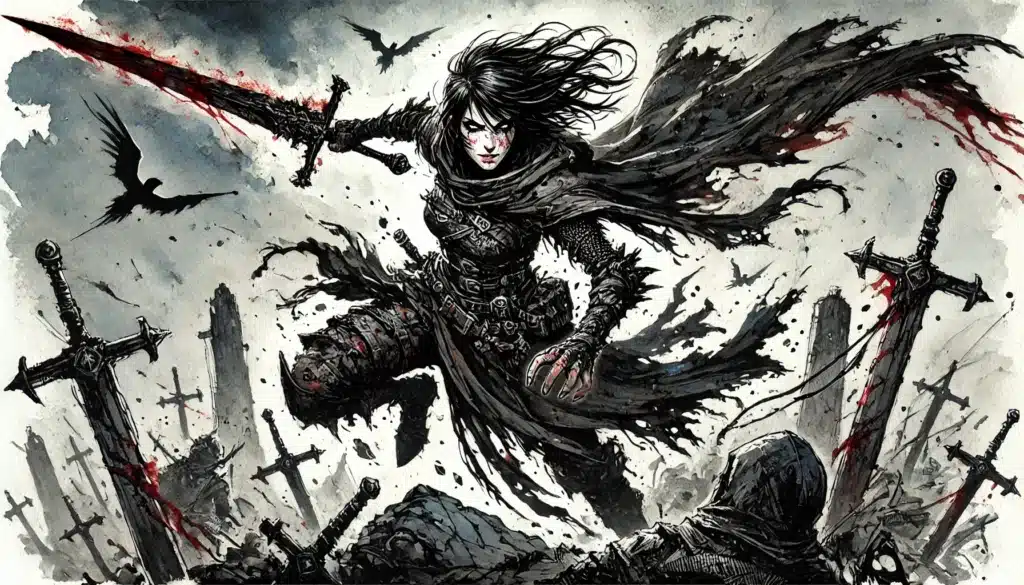
Is the New Hexblade Too Reliant on Hex?
Perhaps the loudest and most persistent critique is this: the 2024 Hexblade’s entire identity hinges on the Hex spell. Without Hex, your subclass’s defining features are lost, and a single failed concentration check can break both your flavor and function in a heartbeat.
This isn’t just an existential problem; it’s a tactical dilemma. Hex is a concentration spell, meaning you can’t use it alongside many of Warlock’s best control or summon spells. Formerly, players leveraged Hexblade’s front-loaded power without worrying about such conflicts. Now, every other concentration spell is a potential stumbling block—your flow is disrupted, your powers are muted, and your options are, ironically, less “warlock.”
Try my AI Tabletop RPG generators...and an extensive library of content!
| Concentration Spell | Former Hexblade Synergy | New Conflict With Hexblade |
|---|---|---|
| Hunger of Hadar | Lay it down for area control, then melee freely | Must drop Hex to use; halves damage output and disables features |
| Summon Undead | Add a pet for more attacks and control | Can’t have both; Hex features go dormant if you summon |
| Hold Person | Paralyze for crits, then nova with smites | Paralyzes, but you abandon Hex and all subclass bonuses |
| Darkness | Cast, fight within via Devil’s Sight | Either sacrifice Hex or lose battlefield control |
| Shadow of Moil | Gain defense and retaliation in melee | Must choose between defense OR full subclass power |
Unlike the old Hexblade, who could choose spells based on the tactical challenge at hand, the new version is handcuffed—your concentration slot belongs to Hex, and Hex alone, unless you’re willing to forfeit most of your class abilities for a turn or two.
This tunnel vision is a familiar frustration for players dabbling in the 2024 Ranger and the new Hollow Warden Warlock, both of which face similar “one spell or bust!” identity traps. When your mechanics force you into obsessive spell maintenance, your flexibility—and, some would argue, your fun—takes a back seat.
For many, this flaw is the new Hexblade’s Achilles’ heel. Specialization comes at the expense of adaptability, and nothing feels more limiting than being told the answer to every problem is, “Just cast Hex again.”
Fan Reactions to the Playtest Version
Venture into any D&D Discord, Reddit, or Twitter thread, and you’ll hear the lamentations of Hexblade players loud and clear. The community response has been swift, impassioned, and at times, outright scathing. Common refrains echo plaintively: “This isn’t a Hexblade anymore,” “Why does it feel like a Ranger?” and the damning, “It’s too narrow to be fun.”
Multiclass enthusiasts bemoan the gutted optimization strategies that once made Hexblade indispensable. Many are bewildered at the loss of martial flavor, pointing out that the subclass’s very name implies a sword-wielding powerhouse, not a spectral spell specialist. Meanwhile, those who wanted a more focused or balanced Hexblade acknowledge improvements, but wonder if the flavor has suffered in the process.
Fan Discussion Trends and Reactions:
- Disappointment at loss of martial weapon, armor, and shield proficiencies
- Outrage over the Charisma-to-attack/damage mechanic being axed
- Frustration from multiclass optimizers and “gish” fans
- Confusion about the subclass name (“It’s not a ‘blade’ anymore!”)
- Criticism that the subclass’s play loop is now “keep Hex up or be useless”
- Distrust over shifting entire identity to a single spell
- Concern about concentration bottlenecked gameplay
- Accusations of “homogenizing” Warlock subclasses
- Appreciation for tighter design and improved balance for DMs
- Worry that this Hexblade now reeks of “Ranger with a new hat”
- Calls for the restoration of at least some armor/weapon access
- Nostalgia for the subclass as a roleplaying or narrative enabler
- Admiration for the thematic move towards “true hexing,” but sadness for lost legacy
While some balance-focused players and DMs breathe a sigh of relief—fewer nova crit machines at their table!—most actively miss the wild, hybrid magic-swordsman gameplay that made Hexblade a legend. The new subclass isn’t without merit, but few feel it wears the old title with pride.
There is grudging respect for the clarity and direction of the new subclass, but even the optimists agree: this is not the Hexblade you remember.
⚔️ Fantasy RPG Random Tables Books
Make life as a Gamemaster easier…
If you play Dungeons & Dragons, Pathfinder, or other fantasy RPGs, this
RPG random tables series
is packed with encounters, NPCs, treasure, and more. Available in eBook or print—either way, you’ll have a wealth of adventure ideas at your fingertips.
Can the New Hexblade Be Fixed—or Is It a Different Subclass Entirely?
Hope springs eternal, and in true D&D fashion, the fanbase hasn’t wasted a second in brainstorming ways to salvage what made the Hexblade great. Suggestions range from the practical to the bold, all attempting to marry the subclass’s newfound focus with its martial legacy.
Some propose restoring martial and armor proficiencies, at least as an option—perhaps tied to Pact of the Blade, or as alternate subclass paths. Others argue that Hex’s centrality can be mitigated by making it a passive effect, akin to Hunter’s Mark for Rangers, freeing up concentration for other spells. A few even suggest letting players choose between “Blade” and “Hex” at certain levels, enabling hybrid builds without relying on outdated multiclass shenanigans.
Player-Proposed Design Revisions for Hexblade:
- Reinstate medium armor, shields, and martial weapon proficiency (even if delayed)
- Make Hex a non-concentration, subclass-specific effect (like Hunter’s Mark)
- Allow Charisma to weapon attacks on specific Pact or feature choices
- Alternate spell lists—one martial, one control/debuff (player’s choice at subclass entry)
- Introduce “Blade” and “Hex” specialization paths within the subclass itself
- Rebalance spell list to reintegrate aggressive smite and weapon spells
- Add additional ways to apply “hex” conditions—marking, cursing, not just via spell slot
- Bring back iconic features like Eldritch Smite, but re-tuned for UA’s balance goals
- Preserve the ability to multiclass for hybrid optimization (“let dip builds live!”)
- Separate rider effects from Hex or let them function on more spells/weapons
- Blend thematic class/backstory elements—offer story incentives for picking “blade” or “hex” path
- Incorporate other “blade-bound” effects (sentient weapon, shadow sword, etc.) as flavorful features
At the heart of this debate is a single question: should this subclass still be called “Hexblade?” If it’s no longer a weapon-bonding martial caster but a pure spell-based controller, maybe Wizards needs a new name—and an entirely separate home—for this design.
Until then, the conversation rages, with players torn between nostalgia and curiosity as they await the next revision.
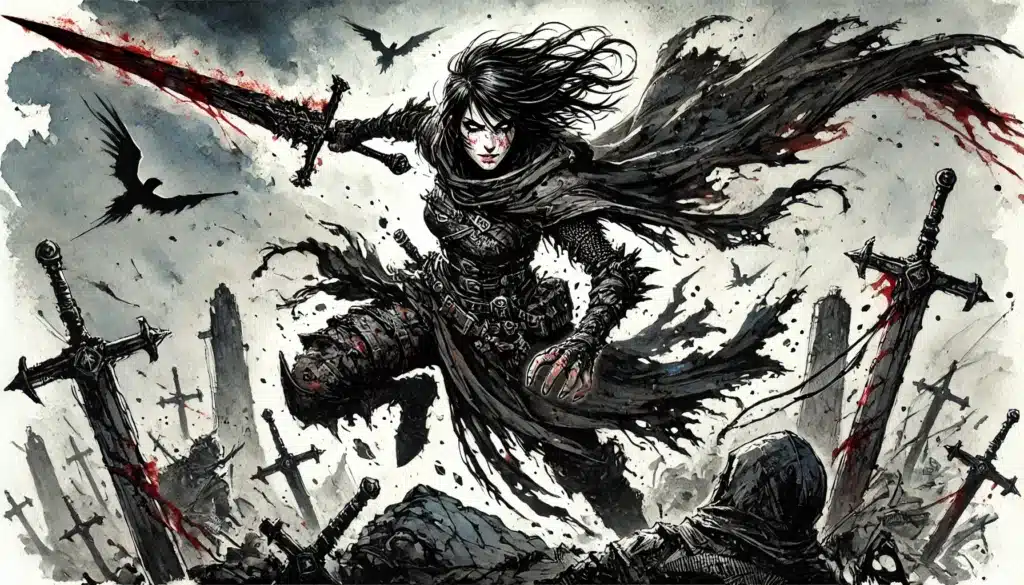
Final Thoughts on the New Hexblade Warlock
The new Hexblade is, by every measure, a radical departure. Strip away the name, and what remains isn’t a martial-caster hybrid, but a warlock reimagined as a kingmaker of curses—less blade, more baleful glare. Its streamlined design is sure to make party balance easier at many tables, and the spell-focused playstyle might even prove compelling for those uninterested in swords and shields.
But in making these changes, Wizards has traded away one of the Warlock’s most beloved and flexible archetypes. Gone is the toolkit that allowed you to roleplay as a death-knight, a haunted avenger, or the classic swordmage. In its place stands a subclass laser-focused on Hex, with all the versatility and danger—for good and ill—that such a singular focus entails.
Much of the backlash, it must be said, is rooted in high expectations and long-standing community traditions. The original Hexblade wasn’t just popular because it was powerful; it was popular because it allowed people to realize a specific fantasy, one no other class could match. By pruning away the martial elements, Wizards risks alienating the segment of their player base most invested in creative, hybrid play.
Still, there’s value in giving this new Hexblade a fair shot. Every table is different, and some might find the revised features enthrallingly tactical or refreshingly distinct from old optimization traps. UA exists for feedback, and Wizards has a window to course-correct if the community’s notes resonate.
Yet as D&D moves toward its next major evolution, clarity of identity and mechanical promise will be more important than ever. If the Hexblade is meant to be the black blade-wielding terror of old, the rules need to echo that promise. If it’s now meant to be something entirely different, that too should be said plainly—in both design and lore, and perhaps with a new banner to fly beneath. Until then, Warlock fans will be watching, waiting, and, above all, hoping the next update gives their favorite blade a reason to shine again.

